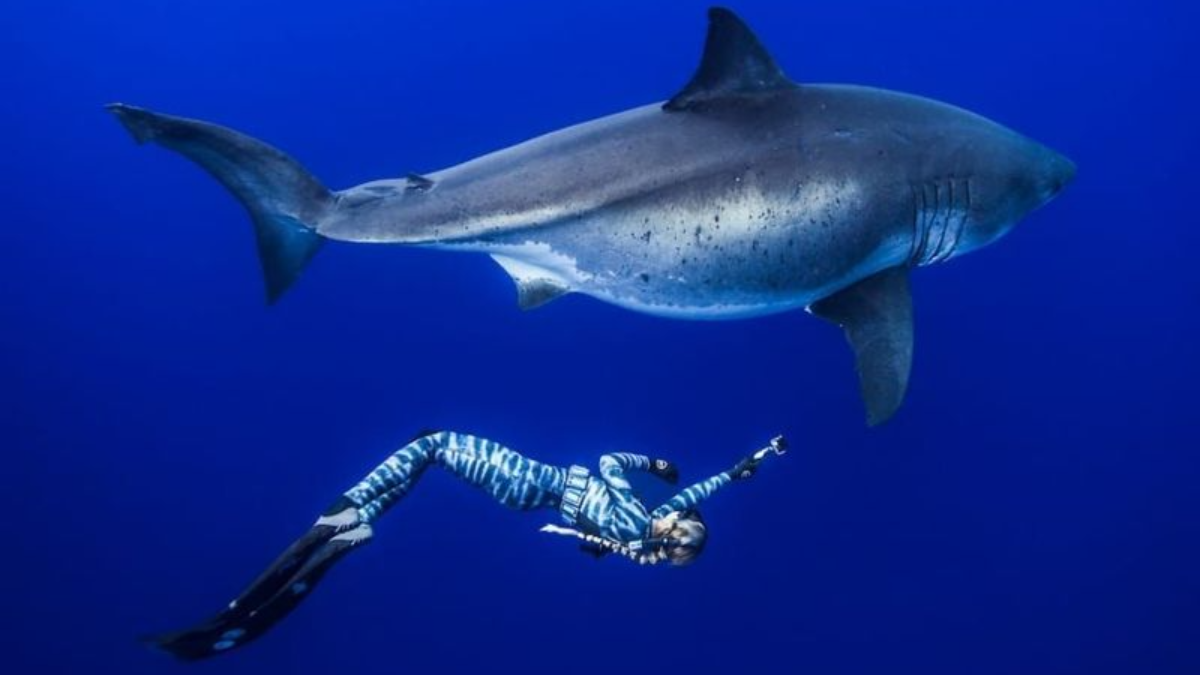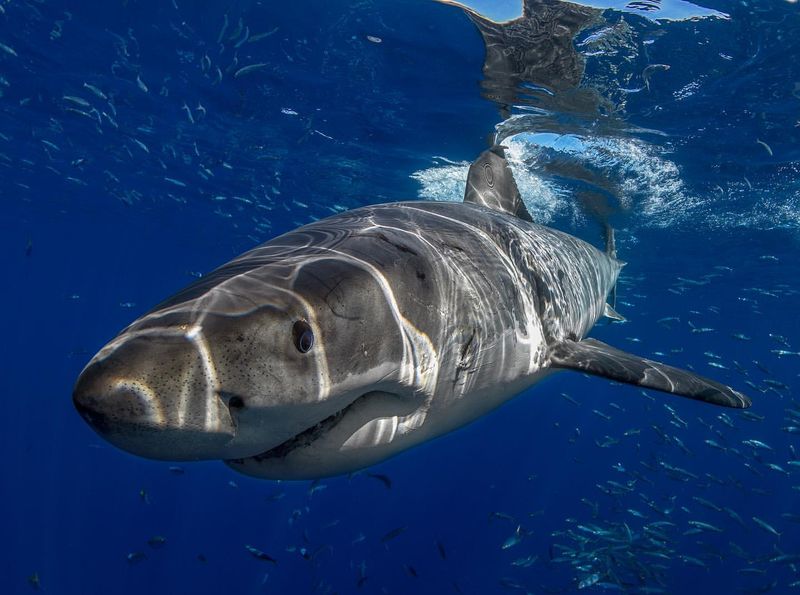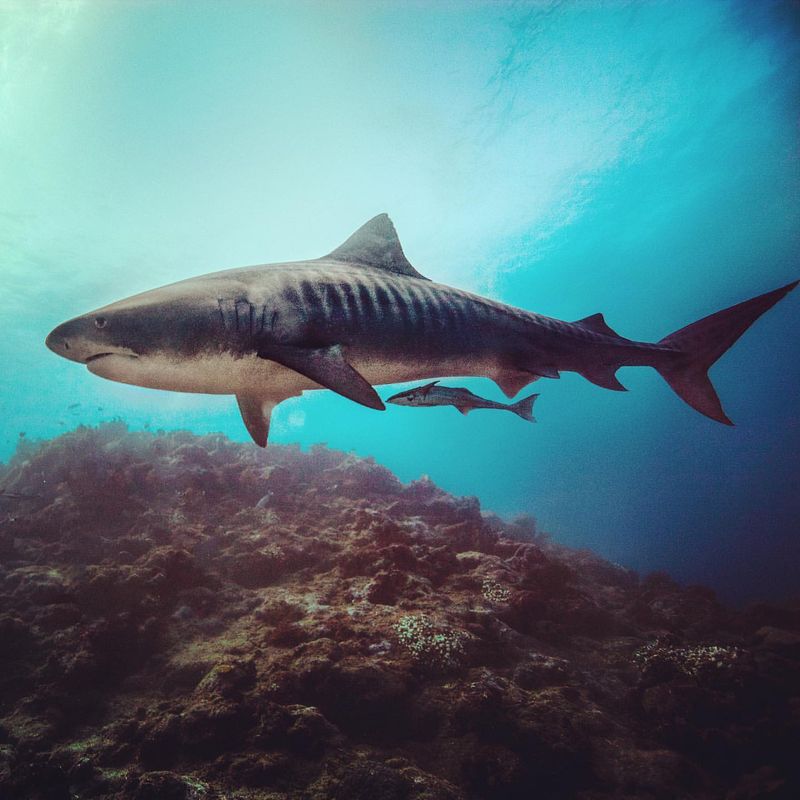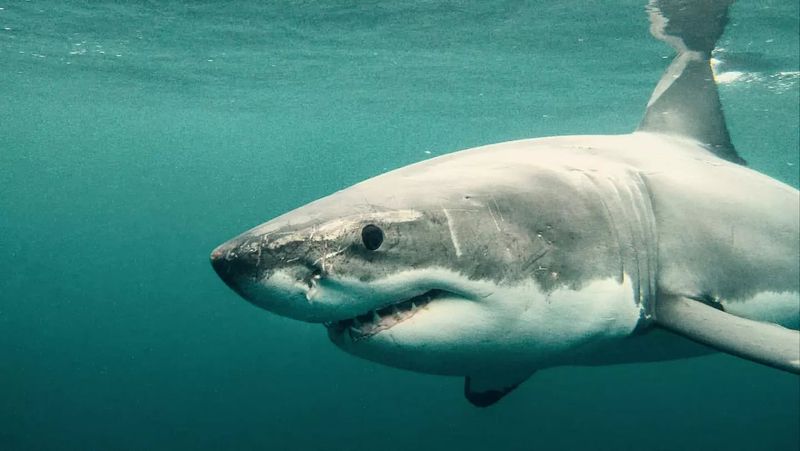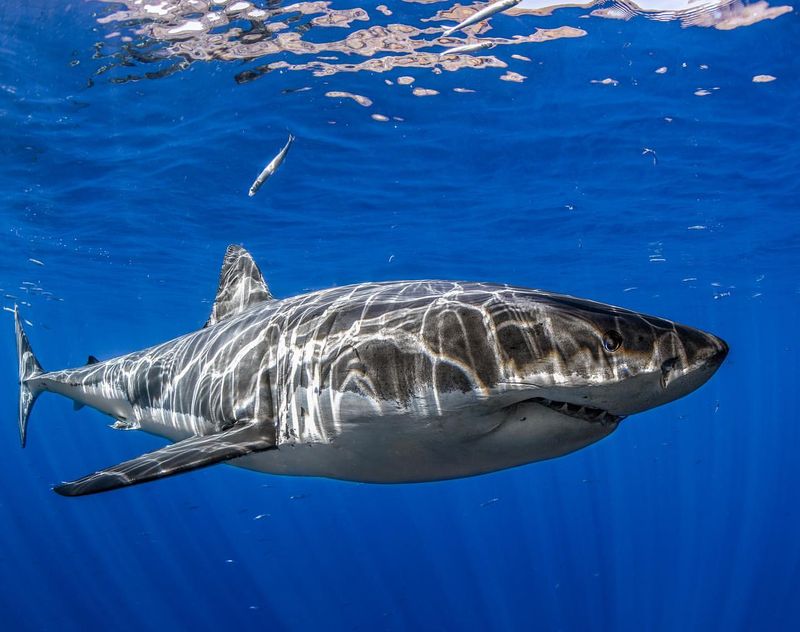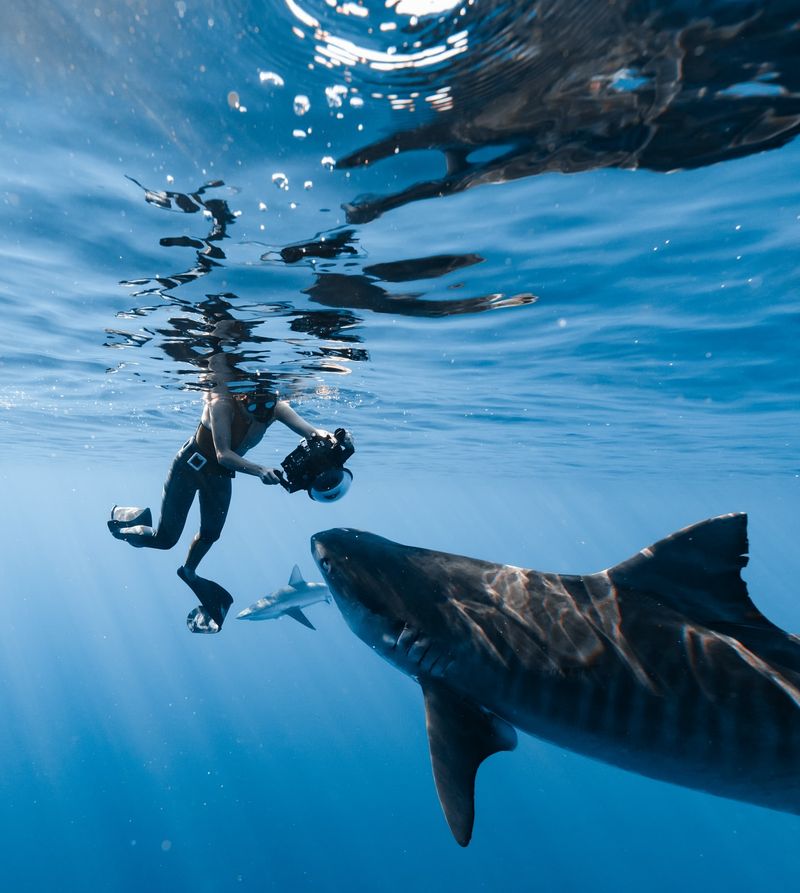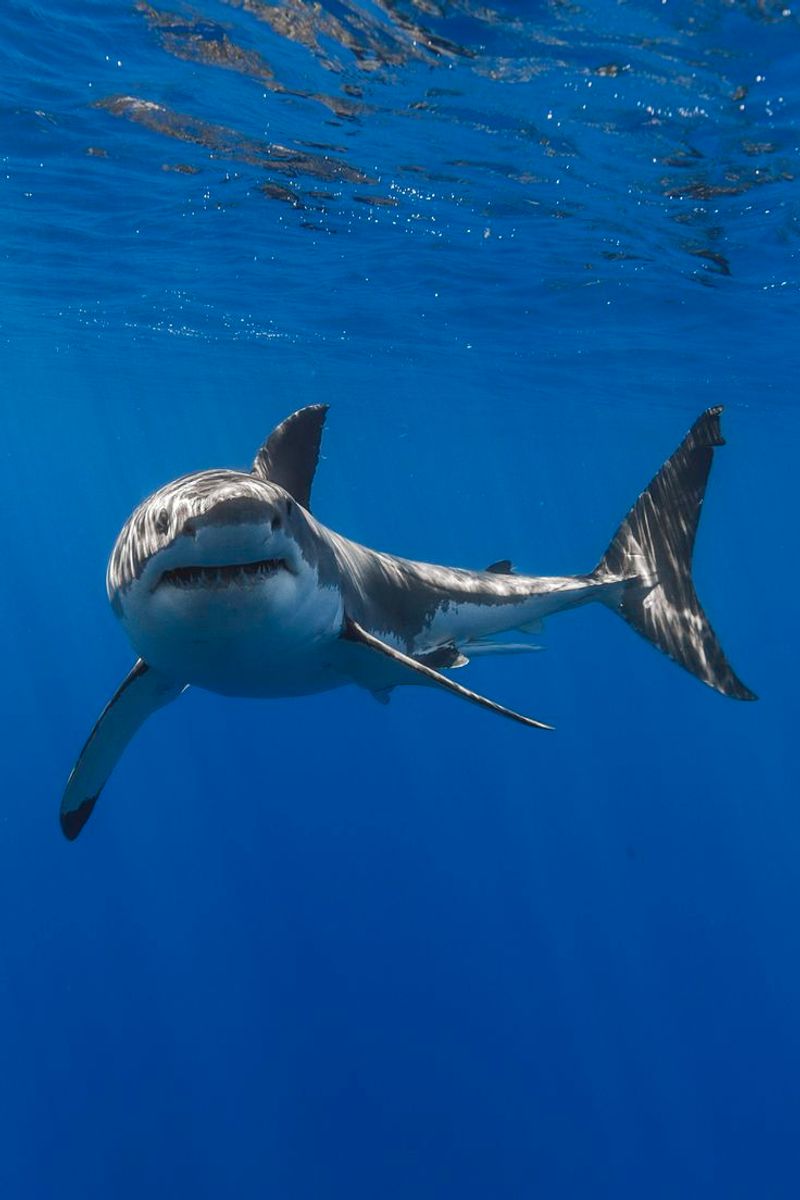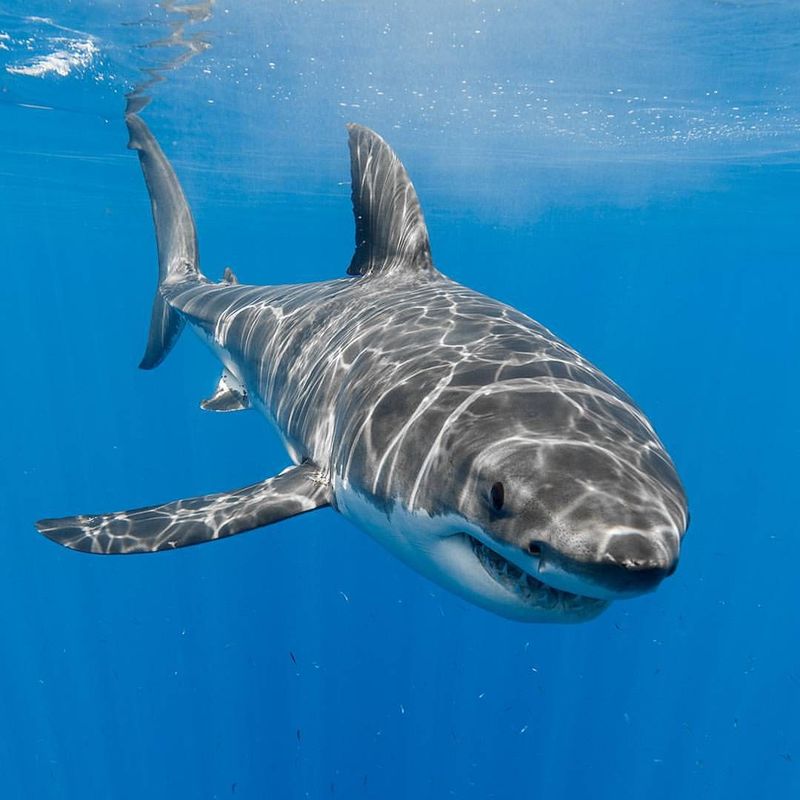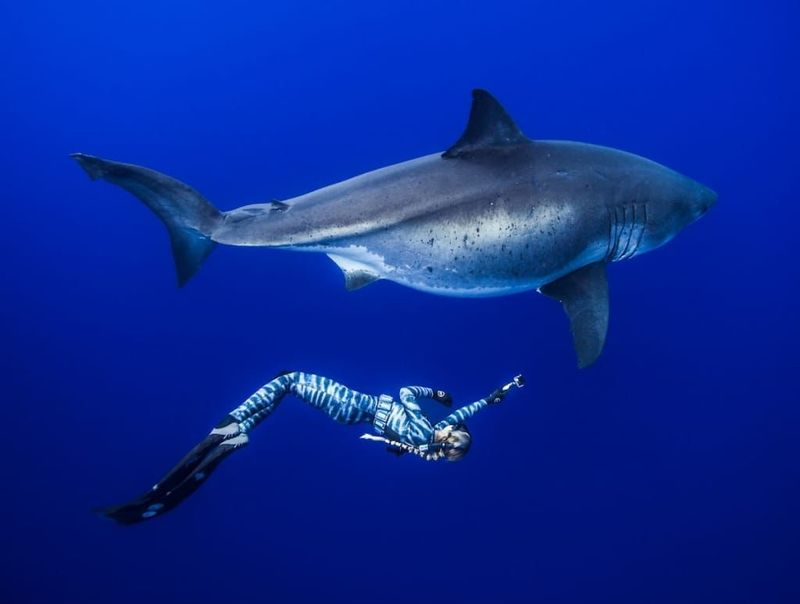📖 Table of Content:
- 1. Size and Space Requirements
- 2. Dietary Challenges
- 3. Stress and Behavior
- 4. Breathing and Oxygen Needs
- 5. Social Structure and Interaction
- 6. Research and Ethical Concerns
- 7. Previous Attempts and Failures
- 8. Costs and Resource Limitations
- 9. Public Perception and Education
- 10. Advanced Technology and Tracking
- 11. Conservation and Protection Efforts
- 12. Legal and Regulatory Barriers
Have you ever wandered through the awe-inspiring halls of an aquarium, marveling at the sheer variety of sea life, only to pause and wonder, Where’s the great white shark?
For a creature so infamous—thanks to pop culture and its undeniable presence in the ocean’s food chain—you’d think it would be the star attraction. Yet, no matter how many tanks you peer into, you’ll never see one lurking behind the glass.
The mystery isn’t due to a lack of trying. Over the years, aquariums worldwide have attempted to house these apex predators, only to face failure after failure.
But why? What makes the great white so elusive, so impossible to confine?
In this article, we’ll dive deep into the fascinating reasons why no aquarium can keep a great white shark—from its restless nature to its unique biology—and explore what this says about the creature’s incredible relationship with the vast, open sea.
1. Size and Space Requirements
Great white sharks can grow up to 20 feet in length and weigh several tons. Their massive size demands an enormous amount of space to move freely, a requirement that is difficult to meet in an aquarium setting. Even the largest aquariums can seem cramped for such a large predator, preventing them from replicating the vastness of the ocean.
In the wild, great white sharks are used to having miles of open water to roam, which is impossible to simulate in captivity. This lack of space can lead to stress and abnormal behavior in sharks, affecting their overall health. Without the ability to swim long distances, these sharks cannot maintain their physical condition, leading to potential health issues.
Providing the necessary space to house a great white shark would require resources beyond the reach of most aquariums, making it a significant challenge.
2. Dietary Challenges
The dietary needs of a great white shark are both complex and demanding. These apex predators primarily feed on seals, fish, and other marine animals, requiring a substantial amount of food to sustain their energy levels. Creating a diet that matches their natural intake is a formidable task for aquariums.
Unlike other marine animals, great white sharks do not adapt well to changes in their diet. They are picky eaters, and if their preferred food is not available, they may refuse to eat altogether. This can lead to malnutrition and health problems, further complicating efforts to keep them in captivity.
Moreover, the logistical challenges of sourcing and providing a consistent supply of fresh, high-quality food make it nearly impossible to meet the dietary needs of a great white shark in an aquarium.
3. Stress and Behavior
Great white sharks are highly sensitive to environmental changes, making them prone to stress when placed in captivity. The artificial setting of an aquarium cannot mimic the complexity of their natural habitat, leading to behavioral issues.
In the wild, these sharks exhibit a range of behaviors that are not possible in confinement. The lack of stimulation and the inability to engage in natural hunting practices can lead to frustration and anxiety. Such stress can cause erratic movements, aggression, and even self-harm.
Stress affects not only the shark’s mental well-being but also its physical health. Prolonged exposure to stressful conditions can weaken their immune system, making them susceptible to diseases. This makes it incredibly difficult for aquariums to maintain a healthy great white shark.
4. Breathing and Oxygen Needs
Great white sharks rely on a process called “ram ventilation” to breathe, requiring them to swim constantly with their mouths open to pass water over their gills. This need for continuous movement poses a significant challenge in a confined space like an aquarium.
In an aquarium, the limited space restricts their ability to swim long distances, potentially leading to inadequate oxygen intake. This can cause respiratory stress and other health complications, threatening their survival in captivity.
Providing an environment that allows for the necessary continuous movement is not feasible in most aquariums. The inability to meet these essential breathing needs is one of the key reasons why great white sharks cannot thrive in captivity, further discouraging attempts to house them.
5. Social Structure and Interaction
Great white sharks are known for their complex social structures and interactions. In the wild, they engage in varied social behaviors that are difficult to replicate in an aquarium setting. These interactions are vital for their mental and emotional well-being.
In captivity, the isolation from their social environment can lead to loneliness and depression. Unlike smaller shark species that can adapt to living in groups within an aquarium, great white sharks require a more dynamic social structure, which is almost impossible to imitate.
The lack of social interaction can lead to behavioral issues and affect the shark’s overall health. Aquariums struggle to provide the necessary conditions for these interactions, further complicating efforts to keep great white sharks in captivity.
6. Research and Ethical Concerns
The ethical implications of keeping great white sharks in captivity are significant. Many marine biologists and conservationists argue that the focus should be on studying these creatures in their natural habitat rather than attempting to house them in aquariums.
Researching great white sharks in the wild allows scientists to observe their natural behaviors, contributing valuable knowledge to conservation efforts. Captivity, on the other hand, can alter their behavior, leading to inaccurate data and conclusions.
Furthermore, the ethical concerns about the welfare of great white sharks in captivity have led to increased scrutiny and opposition from the public and scientific community. This has shifted the focus toward more sustainable and ethical research methods, promoting the conservation of these remarkable predators in their natural environment.
7. Previous Attempts and Failures
The history of keeping great white sharks in aquariums is marked by numerous challenges and failures. Many aquariums have attempted to house these creatures, only to encounter insurmountable obstacles that led to the demise of the sharks.
Previous attempts have shown that great white sharks do not adapt well to captivity. They often refuse food, exhibit signs of stress, and suffer from health complications. These failures have provided valuable lessons, highlighting the complexities and ethical concerns of keeping such powerful predators in confinement.
The repeated inability to successfully house great white sharks has discouraged further attempts. The knowledge gained from these failures has been instrumental in shaping current approaches to shark conservation and research, focusing on preserving them in their natural habitats.
8. Costs and Resource Limitations
Keeping a great white shark in an aquarium would entail enormous costs and resource allocation. The financial burden of constructing a facility that meets the space, dietary, and environmental needs of such a large predator is immense.
Most aquariums operate with limited budgets, making it impractical to allocate the necessary funds to house a great white shark. The costs involved include not only the physical construction of suitable tanks but also ongoing expenses related to food, maintenance, and specialized care.
Resource limitations further hinder efforts to keep great white sharks in captivity. The challenges of sourcing appropriate food, ensuring adequate space, and maintaining a healthy environment demand resources beyond the reach of most institutions. This has made it economically unfeasible for aquariums to house these powerful creatures.
9. Public Perception and Education
While the idea of seeing a great white shark up close in an aquarium may be appealing to the public, the reality is far more complex. Public perception plays a significant role in shaping the policies and practices of aquariums.
Many aquariums have shifted their focus to educational programs and exhibits that promote awareness and conservation without featuring live great white sharks. These initiatives provide valuable information about the species, highlighting the importance of protecting them in their natural habitat.
The emphasis on education rather than exhibition has fostered a greater understanding of the challenges involved in keeping great white sharks in captivity. This approach aligns with conservation goals and helps the public appreciate the need to preserve these majestic predators in the wild.
10. Advanced Technology and Tracking
Advancements in technology have revolutionized the way scientists study great white sharks in the wild. With tools like satellite tagging and underwater drones, researchers can gather vital information without the need for captivity.
These technologies allow scientists to track the movements, behaviors, and migration patterns of great white sharks, providing insights that were previously unattainable. The data collected contributes to conservation efforts and enhances our understanding of these magnificent predators.
The use of advanced technology has made it possible to conduct research that respects the natural habitat of great white sharks. This approach aligns with ethical standards and promotes sustainable conservation practices, eliminating the need to keep these creatures in aquariums.
11. Conservation and Protection Efforts
Conservation efforts aimed at protecting great white sharks have gained momentum in recent years. These initiatives focus on preserving their natural habitat and ensuring the survival of the species.
Collaborative efforts involving governments, non-governmental organizations (NGOs), and local communities have led to the implementation of policies and practices that protect great white sharks. These measures include marine protected areas, fishing regulations, and public awareness campaigns.
The emphasis on conservation over captivity reflects a growing recognition of the importance of preserving great white sharks in the wild. By focusing on protection rather than confinement, these efforts contribute to maintaining the ecological balance of ocean ecosystems, allowing future generations to appreciate these awe-inspiring predators in their natural environment.
12. Legal and Regulatory Barriers
The legal and regulatory landscape surrounding the captivity of great white sharks is complex and challenging. Conservation laws and ethical considerations have led to stringent regulations that limit the ability of aquariums to house these creatures.
Many countries have implemented laws that protect great white sharks, making it illegal to capture or keep them in captivity without special permits. These regulations reflect the growing awareness of the importance of preserving their natural habitat.
The legal barriers ensure that aquariums prioritize conservation and ethical practices over exhibition. This has led to a shift in focus toward more sustainable methods of studying and appreciating these magnificent predators, aligning with global conservation goals and protecting great white sharks for future generations.
